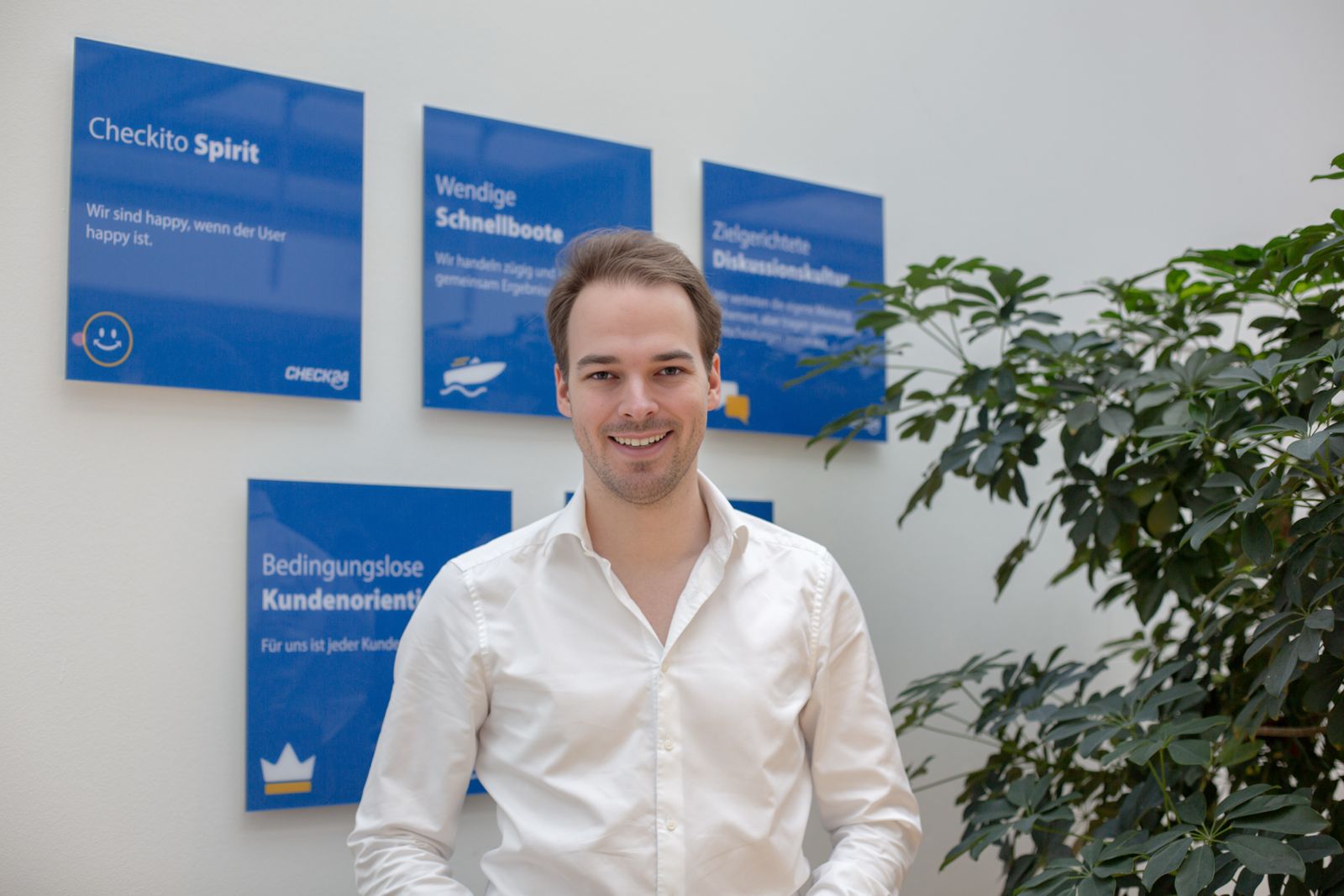[vc_row][vc_column width=“2/3″][vc_column_text]The term “innovation” has become a buzzword in business literature. What is your personal definition of this word?
I like to use a very short definition: Innovation is about creating results by doing new things.
The definition has two elements. First and foremost innovation must be focused on actually delivering end results. It is not enough to just do something creative. If you don’t aim at creating an impact in the real world, you will quickly lose focus, and will not be taken seriously by the rest of the organization. Second, innovation is a behavior. It is not about thinking differently – it is about acting differently in your daily life. What do we have to do differently in order to drive innovation? You won’t make much progress until you have a clear behavioral understanding of what innovation is.
Why do you think it has become such a crucial success driver?
While it’s a terrible cliché by now, it IS pretty clear that the pace of change in business has increased – and when markets and technologies change, leaders have to get better at changing themselves and their businesses, as opposed to just executing better.
But that alone doesn’t explain why innovation has become so prominent; I mean, when did you last read a business-related magazine that didn’t mention innovation? Of equal importance is that innovation has become a more widely required skill. In the first half of the 1900s, innovation was mostly technically focused, and took place in a corporate R&D lab. Roughly from the 1960s onwards, however, there was a gradual movement into the rest of the organization, as we became more conscious of the fact that you can and should innovate in the non-technical aspects of your business as well. And by the end of the 1990s, the work of Clayton Christensen and many others had established innovation as a critical skill to master, for both companies and individuals. Basically, it went from being a specialized, highly technical corporate function to being an individual, non-technical competency that is relevant no matter what you work with – which explains why it’s become that much of a buzzword.
How about the question of risk?
Risk is tied to innovation, but the relationship is not as straightforward as you might think. On one level, of course, you run a risk the second you start doing something differently from how you did it yesterday. But on a broader level, the relationship is not necessarily 1:1. For instance, a lot of people tend to say, ‘We have to run more risks to succeed with innovation’. That, however, is not always a viable choice. Risk is per definition bad, and if the reality is that your company has a very low tolerance for bad things happening, your credibility as a leader will suffer if you try to push for too ambitious, industry changing projects.
I often advocate the inverse approach, namely, letting your risk tolerance define what kind of innovation to pursue. In practice, that means asking: What is my risk ceiling? Given my job and the context of the business situation, what is the maximum amount of risk we can take right now? And then letting that determine what kind of innovation projects to pursue. It is also noteworthy that many innovators are really good at de-risking their projects. It is as if they treat risk as a budget, and find creative ways of using that budget – e.g. by doing really small experiments or handling the political consequences of failure better.
Prior to your academic and business career you served as an officer and infantry platoon commander with the Danish Royal Guards for four years. How come you changed your mind and decided to pursue an academic career focusing on innovation? How has being an officer influenced your academic and business views?
Personally, I really enjoyed my time in the military, but it also felt isolated: the army basically becomes your entire world. So after a few years, I started to miss getting more exposure to different worlds, which led me to go into the academic world. But there is little doubt that the army years were very influential on my current work on innovation.
Take the idea of understanding your role as a leader. When I got promoted to lieutenant, I had a company commander who did everything himself. He was very good at what he did and he was constantly micro-managing everybody. That worked perfectly on a one-day field training exercise because he could just power through and run the entire exercise and he got great results. Then our battalion went on a field exercise that was a week long. That’s where he failed completely. He literally fell asleep on day three.
He had never learned the ability to delegate, which is critical for innovation. I see a lot of executives think that they have to be the creative mind, coming up with innovative projects and then working to create ‘buy-in’ among their people. That is the wrong way to think about it. As a leader, your job is to create results through other people – and that goes for innovation as well. I talk about the leader’s role as an “innovation architect”: Somebody that creates the space in which other people can become more innovative. That is really the difference between one person thinking creatively, versus pulling on the entire company’s creative powers.
You and Paddy Miller have written the book “Innovation as usual” which discusses how leaders can make their employees more innovative by highlighting six key creative principles. What inspired you to co-author this book and what feedback did you receive from the manager community?
The book was born because we realized that managers tend to make the same type of mistakes when they try to make innovation happen. So we were not really motivated by a particular theory or framework that we wanted to spread. It was more a question of how can we help people make fewer mistakes when they try to innovate as part of their regular jobs.
For that reason, it was imperative for us to be very hands-on, and I’m glad to say that our readers seem to have recognized that; people tell us they love how practical the book is. We also thought it was crucial to give advice that was doable for people that had regular jobs, as opposed to working in a specific innovation function. That was also a strong feedback item: We give people advice that you can actually start to work with in your current job.
The six principles in the book are outlined in the side box.
Which principles do companies struggle with the most and what are the most common innovation-killers?
A frequent challenge is the question of speed, which I talk about in the chapter on ‘tweaking’ your ideas. Executives understand intellectually that innovation projects have to move fast. But they don’t fully understand HOW fast that is until they have experienced it themselves.
A good illustration is the startup Managed by Q, a 500 people big company in New York that I am writing a case on right now. Managed by Q basically offers superior office cleaning, plus a lot of side services such as ordering supplies and requesting handyman services. They have been very successful while also offering their employees much better wages than the industry average, and were just profiled in the New York Times magazine.
The two founders, Saman Rahmanian and Dan Teran, initially wanted to provide their service to residential buildings. The first thing they did, before building anything, was to put together a slide deck and set up a week’s worth of sales meetings with managers of residential buildings, asking them to make a down payment if they wanted in on the pilot. After one week, it was clear that residential buildings were very hard to sell to – so in the following week, they decided to try the same process with managers of office buildings, and their proposition was much better received. That was in January 2014. In April 2014, Managed by Q delivered the first cleaning. Or in other words: The process from idea to having an actual, up-and-running business took a bit more than four months. That is about the time it might have taken a big company to put together a solid business case for some senior executive to ponder.
That kind of speed is mind-boggling to many corporate people, and it will not just happen automatically in a big company. If you want to attain the same type of velocity, you have to create structures for it – or what we call an architecture of innovation in the book. For instance, I just published another case study on a company called Prehype that builds startups for big companies (“Startup as a Service: The Prehype model”). Prehype has a 100 day rule for evaluating new ideas: basically, if it is not possible to build the first working prototype of the idea in 100 days, the idea is too big. That kind of structures help them move at the speed necessary to innovate successfully. Companies that don’t have such limits end up creating way too ambitious projects that then often die a long and protracted death.
What other risks do companies face when implementing an innovation process?
One big danger is that of building structures too rigid for innovation. As I talked about, you want to build processes to help with the key innovation behaviors – but you also need the power to change the structures fairly easily, as you learn more about what works and what doesn’t. That is key because while the core tenets of innovation are pretty similar across all industries, you still have to adapt them to fit your specific situation. Basically, you don’t want to get locked into the first structures you define. I have seen innovation departments get in trouble because they say: We have a plan, and here are the Key Performance Indicators that we’re going to deliver on! Half a year later they realize that some of the KPIs are counterproductive, but then they are committed to them.
In comparison, I wrote a case study on Samsung’s innovation department that was published last year (“Samsung’s European Innovation Team: Fueling Customer-driven Growth”). They created structures for themselves, but they actually did not define the final KPIs until a year and a half into the process. They started with some KPIs, but they told their senior sponsors: This is what we are aiming for, but we may change it along the way once we figure out what really gets us to where we need to be.
On a related note, I would add that people generally tend to aim too high. When you read about innovation, it tends to be about industry-changing examples like the iPhone and the Tesla car and so on. But those types of projects tend to have a tremendously high risk, and typically they are not compatible with having a normal job. So I tell people that while shooting for the moon is fine, you may want to aim your FIRST shot a good deal lower than that. Aim at an interesting opportunity, but start small, so you can course correct before you fire up the big engines.
Finally, companies tend to pay too little attention to really understanding what problem they are trying to solve. They get an idea, build the product or service, and then they realize that nobody cares. Call it solution-driven innovation. In comparison, people who are good at innovation tend to be problem-driven. They start with saying, what is a basic pain point in our industry or with our customers right now? Solution-driven innovation CAN work, but it tends to be really risky. So if you are in a situation where you cannot take a lot of risk, which is quite typical, then you are much better off making sure you start with a really solid problem that customers actually care about.
In which industries do you see the highest potential for more innovation and why?
Actually, I don’t distinguish between industries so much. To me, the more interesting question is: Which part of your own industry have you overlooked? Companies and industries tend to look for innovation only in certain areas, while ignoring other parts of their business. In finance, for instance, there is a lot of excitement around bitcoin and similar technologies, while other parts of the business get no attention whatsoever. My personal bank here in the US, for instance, has a rather bad online banking website, and basic transactions are needlessly complicated. Banks might tell you that this is an unavoidable consequence of the complexity of the business, security concerns, and so on. But I also have an account with Danske Bank in my native country of Denmark, and they do a really great job at all those things. They also just introduced a super simple mobile payment app that is now the leading mobile payment app in Denmark – just by focusing on making the customer experience really great and flawless. So it IS possible. But it requires you to understand that innovation can happen outside the high-tech arena as well.
Do firms need an external advisor like you to implement innovation processes?
I like to compare external advisors to personal trainers: you don’t need to hire one to get in shape, but it does increase the chance that you get it done. In that way, you can almost see external advisors as a kind of corporate self-management tool – but one that comes at a cost, of course. Whether that cost is worth it really depends on the situation.
I also noticed something similar on the internal communications level. I do a lot of big-stage keynote speaking at corporate events, trying to help the employees make better decisions around innovation. That is the evident reason for booking me, but my clients also tell me something interesting: their employees take the message more seriously when it comes from an external speaker. Working in a company, you hear tons of messages every day from various characters inside the business. Innovation is said to be important – but then, so is everything else. And since employees have limited time, they often look for signals that indicate how serious the leadership team is about a given message. Hiring a Harvard author to give the opening keynote at your yearly all-employee meeting is, of course, a very different signal strength than having an internal trainer give a lunch break talk on the topic.
According to official statistics published by the Swiss government over 60% of the firms operating in Switzerland are classified as Small and Medium-sized Enterprises (SMEs). Small firms often lack sufficient financial resources to invest into innovation. What would your personal advice be to those firms, taking into account their often limited financial resources?
Well, first of all, consider reading my book. We wrote it for people who have a busy day job and don’t have extra innovation budgets, and the stories we share show how people in similar situations have managed to innovate none the less.
Second, there is a good deal of research that shows that there is no clear correlation between investment in innovation and return on that investment. While there are exceptions to this, the general rule is that your success with innovation is more about how you do it than how much money you have.
Third, start fixing the local situation. Many people say, ‘we have to change the entire company before we can innovate’. My response is: Well, that is probably not going to happen anytime soon. So instead of waiting for the entire company to change, you should ask instead: Can I change my team? Can I try to experiment with the way we run meetings or meet customers? Very typically it tends to be small practical steps like those that ultimately end up having a big effect.
Also, SMEs actually have an advantage in that situation. If you are lucky enough to have a number of employees that you can actually gather in a single room and talk to everybody at the same time, then that is a great starting point. In that sense, you have a much better platform to drive change than many of the international firms I’ve worked with.
Finally, I think it is important to know that you can absolutely be innovative without necessarily being a crazy, creative type. A lot of the people that I work with, when you look at them, they don’t necessarily look or come across as very innovative people in terms of their personal brand. And you don’t have to do that. You can get amazing stuff done if you start looking at the behaviors instead of trying for something overly flamboyant.
I have heard you are already working on a new book. Can you tell us what it is about?
In essence, my new book teaches people to solve the right problem. One of the most frequent mistakes I see in management in general is that people don’t make sure they are actually solving the right problem before they proceed. And so you see people being very busy, doing something that is aimed in the wrong direction. The book is really a practical tool to help you and the people in your company get better at spotting the right problems and figuring out how to solve them. I am very excited about the book as it has very broad application. Not everybody has to deal with innovation, but I don’t know anyone that suffers from a lack of problems.[/vc_column_text][/vc_column][vc_column width=“1/3″][vc_column_text]The six leadership principles of ‘Innovation as Usual’
Focus: Too much freedom is bad. Leaders must limit and direct the search for innovation by providing a clear direction and tangible objectives to achieve.
Connect: Insights come from the outside. Leaders must help people connect to customers, colleagues and beyond in order to get higher-quality ideas.
Tweak: First ideas are flawed. Even good ideas are almost never perfect to begin with, so leaders must make people test, challenge, and reframe their ideas repeatedly.
Select: Most ideas are bad ideas. Leaders must help gatekeepers master the process of evaluation, so they get better at killing bad ideas and selecting the good ones.
Stealthstorm: Politics matter. Leaders must help people deal with organizational politics as good ideas don’t always win on their own merits.
Persist: Passion motivates more than fear. Leaders must help their people persist in the pursuit of innovation, by removing obstacles and leveraging their personal passions.[/vc_column_text][vc_row_inner][vc_column_inner][vc_empty_space][vc_separator][vc_column_text]
Contributor
[/vc_column_text][vc_column_text]
This interview was conducted by Massimo Höhn on behalf of the St.Gallen Business Review. Originally published 6. March 2016.[/vc_column_text][/vc_column_inner][/vc_row_inner][/vc_column][/vc_row][vc_row][vc_column width=“3/4″][vc_empty_space][vc_separator color=“black“][vc_empty_space height=“8px“][/vc_column][vc_column width=“1/4″]
[/vc_column][/vc_row][vc_row][vc_column width=“1/4″][vc_column_text]

[/vc_column_text][/vc_column][vc_column width=“1/2″][vc_column_text]About Thomas Wedell-Wedellsborg:
Thomas Wedell-Wedellsborg is the co-author of „Innovation as Usual“, a Harvard Business Review Press book on the art of driving innovation in regular organizations. His research has been featured in Harvard Business Review, The Sunday Times, The Telegraph, BBC Radio, Bloomberg Businessweek and the Financial Times. In 2014, Britain’s HR Magazine included Wedell-Wedellsborg on their list of “Top 20 International Thinkers”.
Alongside his academic activities, Wedell-Wedellsborg is a partner at the advisory firm The Innovation Architects, where he has worked with managers in nearly all parts of the globe, including China, India, Russia, Singapore, Britain, France and his native country, Denmark. As a keynote speaker, he has spoken at events held by Time Warner, Cisco, UBS, Credit Suisse, Deloitte, T-Mobile, The Economist, The United Nations and many others.
Prior to his business career, Wedell-Wedellsborg served for four years as an officer and infantry platoon commander with the Danish Royal Guards.[/vc_column_text][/vc_column][vc_column width=“1/4″]
[/vc_column][/vc_row][vc_row][vc_column width=“3/4″][vc_empty_space][vc_separator color=“black“][vc_empty_space height=“8px“][/vc_column][vc_column width=“1/4″][/vc_column][/vc_row][vc_row][vc_column width=“1/4″][vc_column_text]
[/vc_column_text][/vc_column][vc_column width=“3/4″][vc_column_text]
[/vc_column_text][/vc_column][/vc_row]






